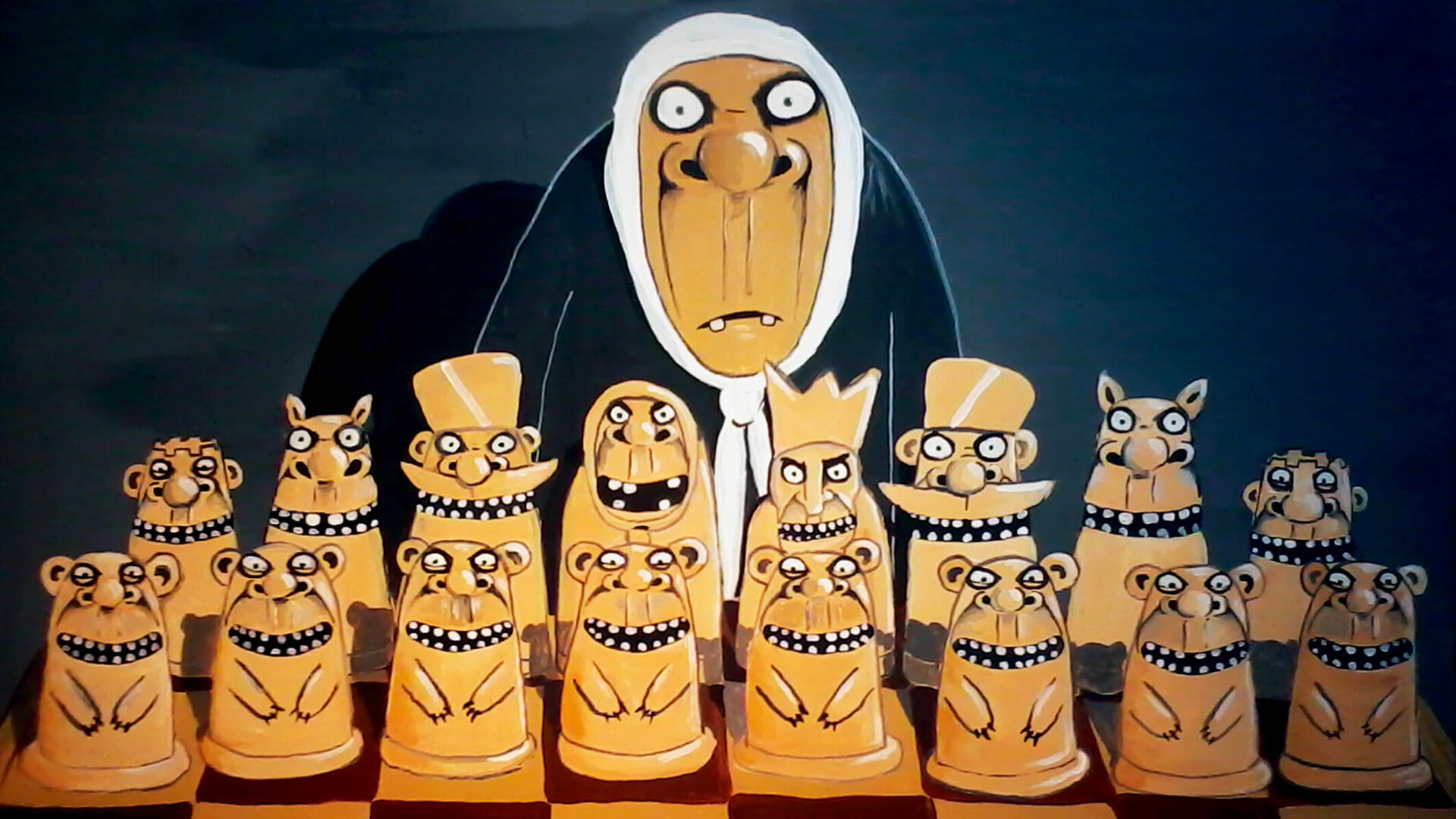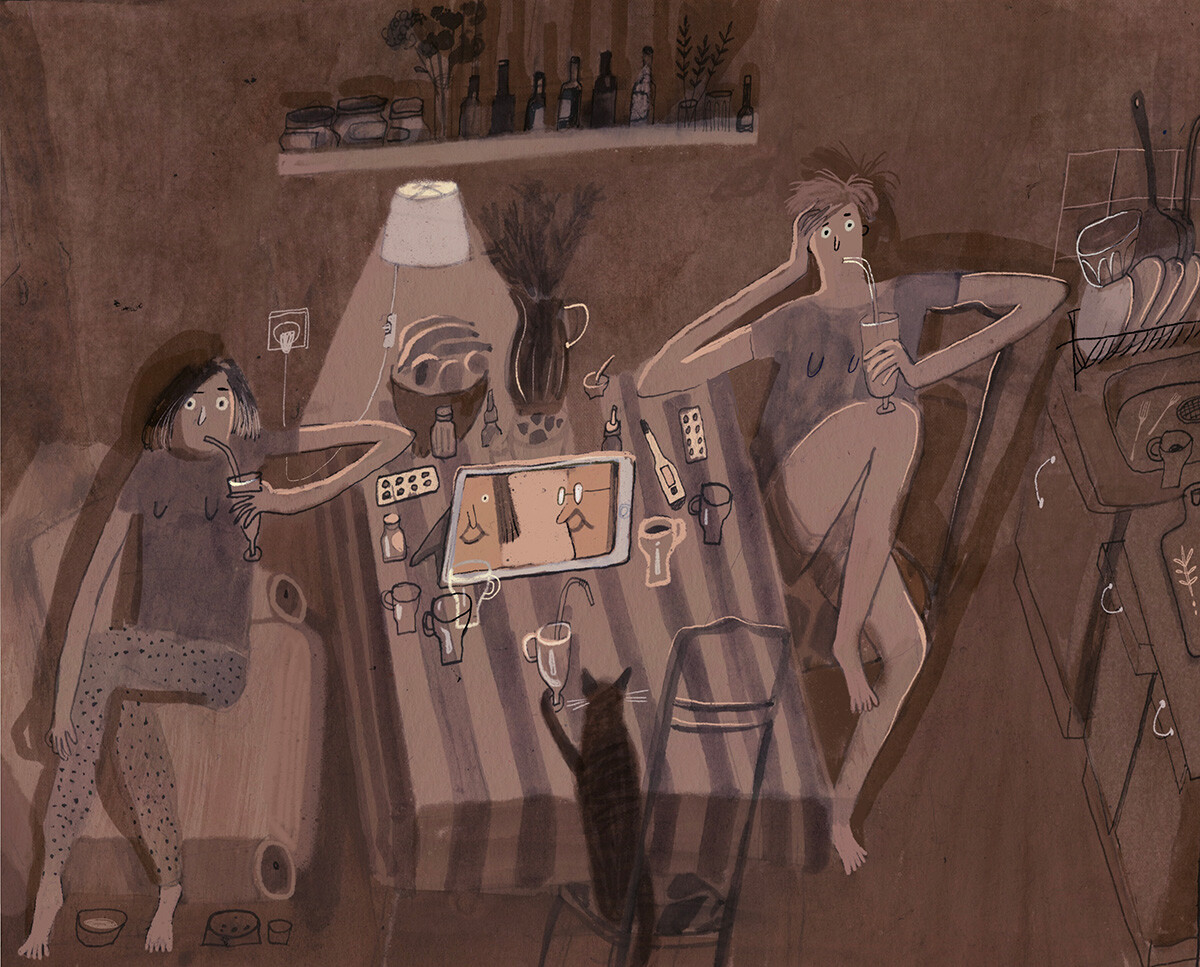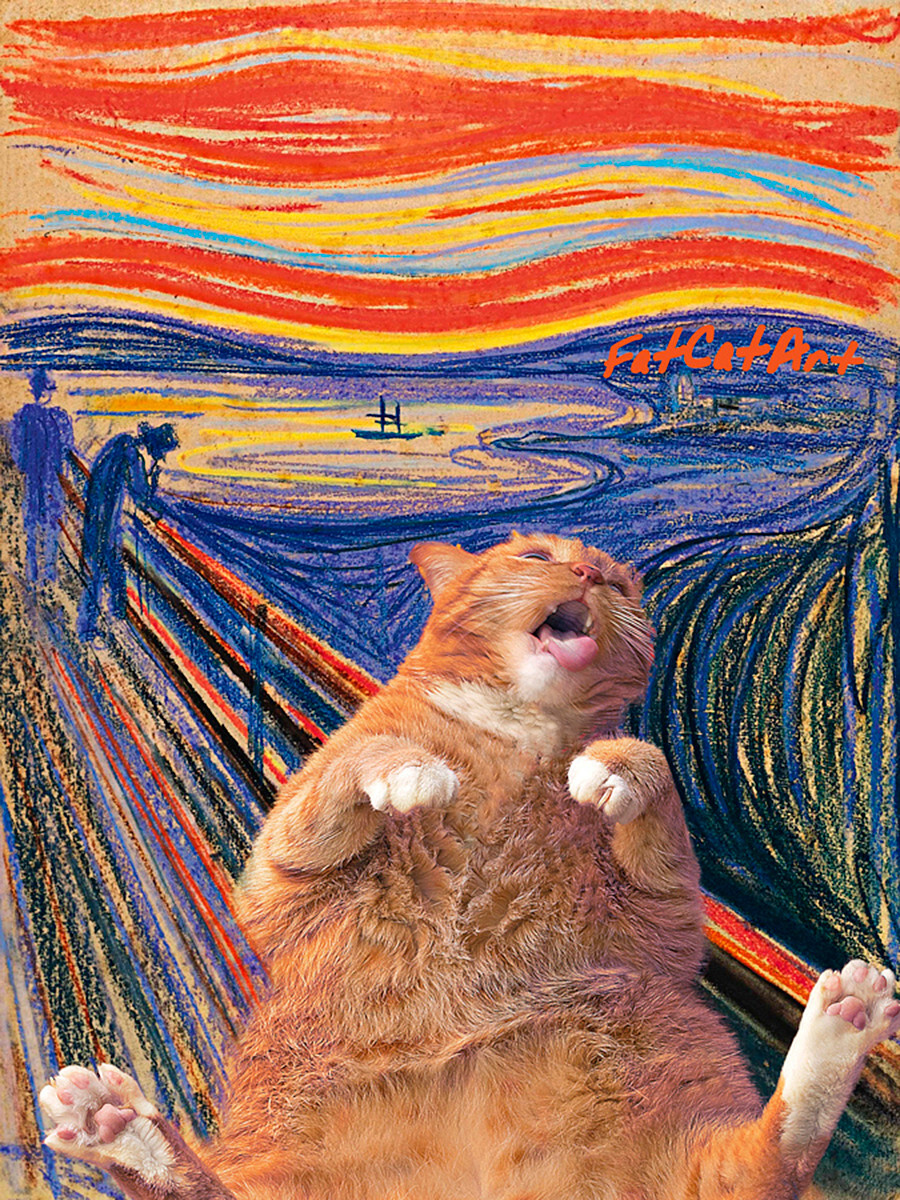
Artists have been depicting cats since ancient times. We’ve already put together a selection of cats depicted in classical painting. Meet these contemporary Russian artists, who also couldn’t resist putting cute furballs on their canvases.
The St. Petersburg artist Maria Pavlova paints everyday life in and outside the city and the models of her paintings are often imposing and aristocratic cats. The artist doesn’t have any felines at home, as one of her daughters is allergic, however that doesn’t stop stray cats from coming to her home, lying on bookshelves, sitting at the table and “teaching” the kids to play the piano. For their hard work, the cats receive a tasty reward and a keepsake portrait. This painting, titled ‘Duet’, is one of her most famous works. It was even turned into a meme on social networks!
Maria Pavlova also paints extraordinary still lifes with flowers, draws covers for children’s books and regularly holds exhibitions in St. Petersburg galleries.
One of the most eccentric contemporary artists is Vasily Lozhkin from Moscow Region, who is known for his social satire paintings. His characters are brutal cats, stern grannies and giant bears wearing ushanka hats. They may look creepy, but that’s only at first glance. “A fairy tale with a good end,” is how the artist writes about his work. “I don’t like generalizations in my work, so everything in my paintings is concrete - if it’s, for example, a humanoid crazy babushka with an ax, that’s it and not some collective image, metaphor or other nonsense.” But he’s actually painting an imaginary world, so there’s nothing to worry about.
Vladimir Rumyantsev’s Petersburg watercolor cats are sophisticated intellectuals who have literary conversations with poet Alexander Pushkin, enjoy the city from the rooftops together with angels and have romantic moments on the embankments. His cats were so beloved by the locals that you can now find them in calendars and other souvenirs from St. Petersburg.
At first glance, the paintings of Alexander Maskaev from Moscow Region could seem like illustrations for children’s books, but through his fairy tale characters, he depicts serious issues. For example, look at whose tune the mice are dancing to and what the parrot in the background is doing.
Moscow-based artist Stepan Kashirin creates pictures with anthropomorphic characters. He created the ‘Beer Men’ and ‘Jewel Girls’ series and after came the project ‘Cat People’. In fact, in his works, cats live people’s lives: they are dating, getting married, going to parties, fishing, doing science. The genre in which he works, Kashirin calls “fantastic realism”. By the way, he also has a whole project in which cats “replace” people in famous paintings by old artists.
Dmitry Trubin, an artist and sculptor from Arkhangelsk, is known mostly for his geometric portraits and monumental paintings. However, he has a whole series of watercolor cats that indulge in various entertainments in the evenings. They play cards, have a drink, eat delicious food - as we say, nothing human is alien to them.

Cats, dogs, and pigeons are the favorite animals of illustrator Alisa Yufa from St. Petersburg. She calls her sketches of city life simply "pictures," and her fans never cease to admire her style and intellectual humor. Alisa's cats "rescue" people from the bath, check for food in the fridge, watch social media together, and generally make the world a cozier place.
Welcome to the universe of Stepan the Cat and his cat girlfriend Maria! This world was created by an artist named Bird Born, who carefully hides his real name and lives in Moscow and St. Petersburg. In addition to cats, his world also has birds, the ghost of a hare, Death, who hates their job, wolverines and other mystical characters. Bird Born’s sketches about the lives of these characters are very popular with Russian social media users.
Vladimir Kamaev, an artist from St. Petersburg, who works under the pseudonym ‘SOAMO’, is known for his abstract watercolors. Cats have been appearing in his art since 2020, during a period of self-isolation. Along with them are people lying on couches, plates of borsch and, of course, people who try to give their pets a manicure.
Artist Pavel Gavrilov from Rybinsk (Yaroslavl Region) creates modern Russian fairy tales: in this painting, a cat lies in forget-me-not flowers… In other works, a hare hurries with flowers to an important date or an angel sits by a fireplace, thinking about eternal things. By the way, Pavel’s favorite artist is Viktor Vasnetsov, who also created fairy tales for children and adults.

Edvard Munch, ‘More of thiS cream!’
FatCatArt.comWhat if Edvard Munch’s ‘The Scream’, in fact, depicted a cat on a diet or Zeus was turned not into the bull to abduct Europa, but into a giant feline? Take a look at how Russian artist Svetlana Petrova created “new” versions of these well-known masterpieces, as well as many others, with her beloved ginger cat, Zarathustra!
Dear readers,
Our website and social media accounts are under threat of being restricted or banned, due to the current circumstances. So, to keep up with our latest content, simply do the following:
If using any of Russia Beyond's content, partly or in full, always provide an active hyperlink to the original material.
Subscribe
to our newsletter!
Get the week's best stories straight to your inbox